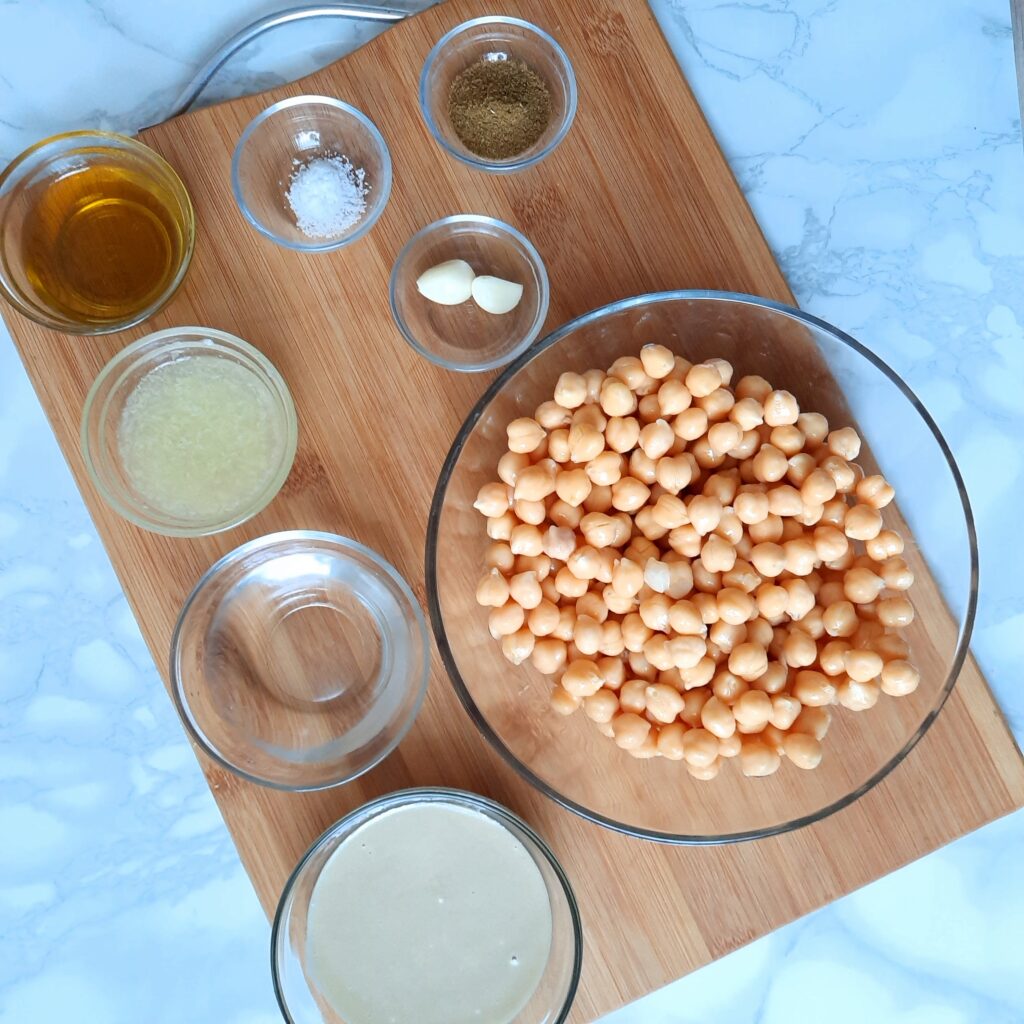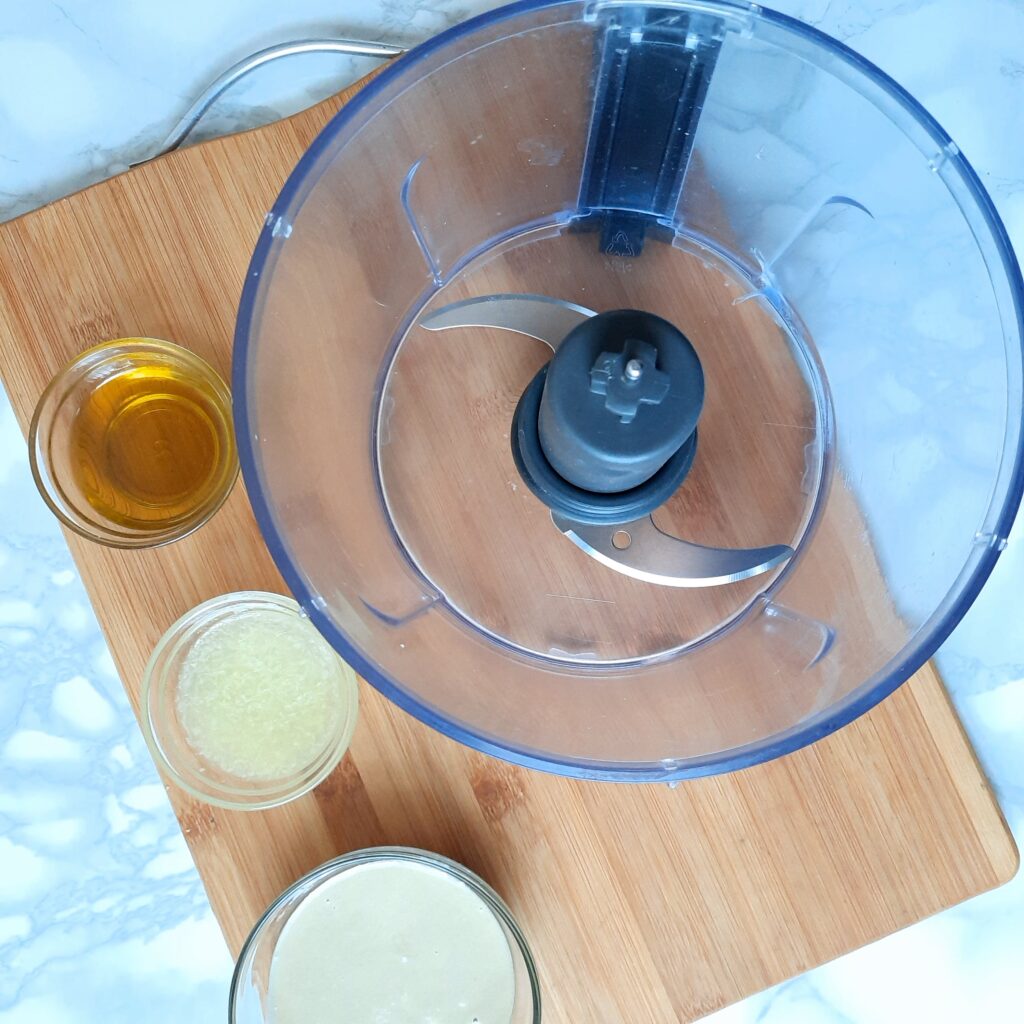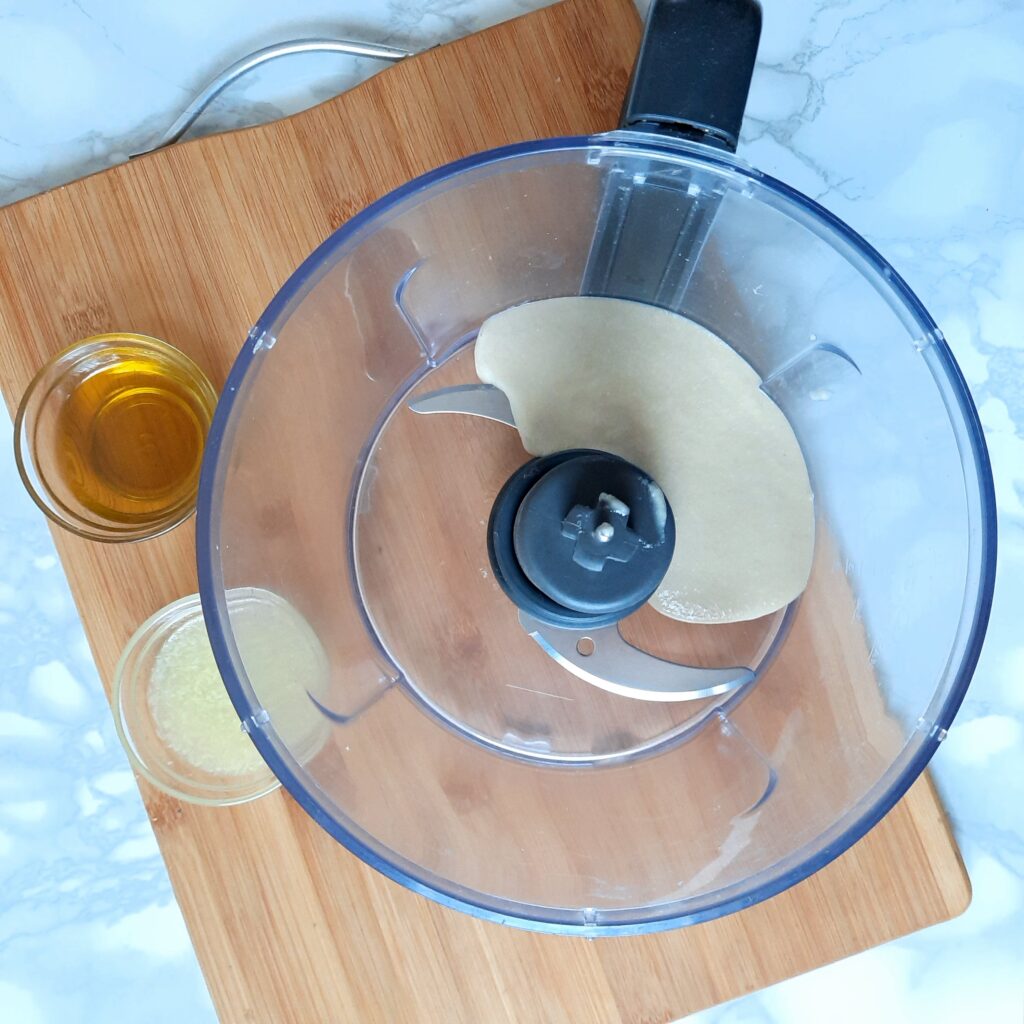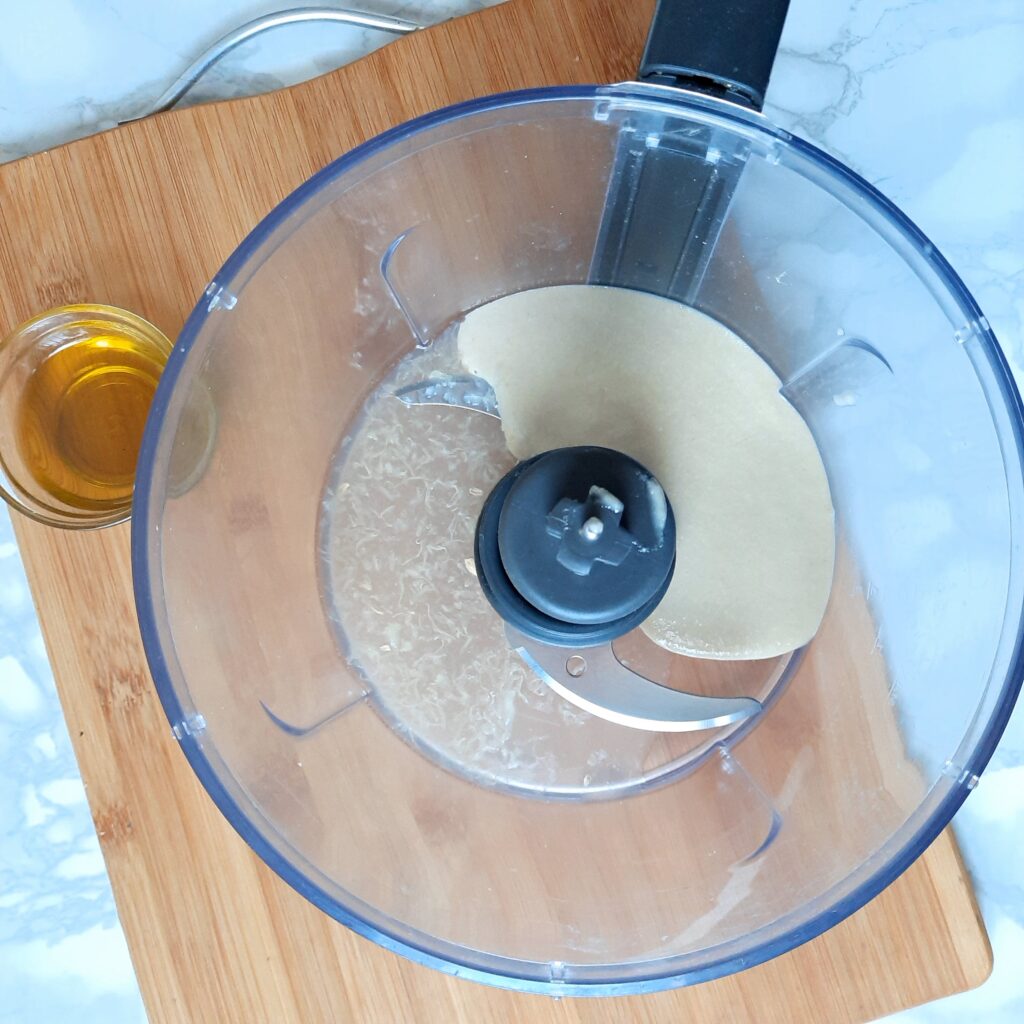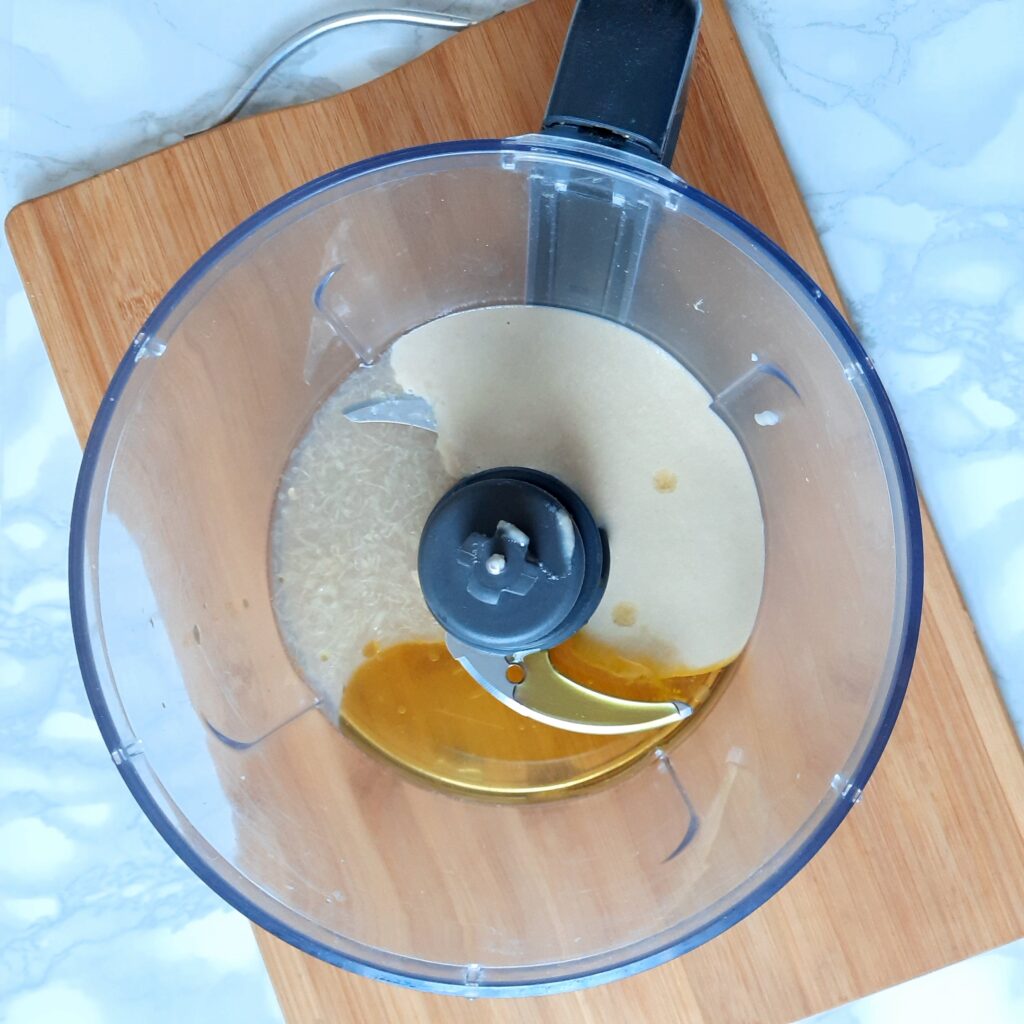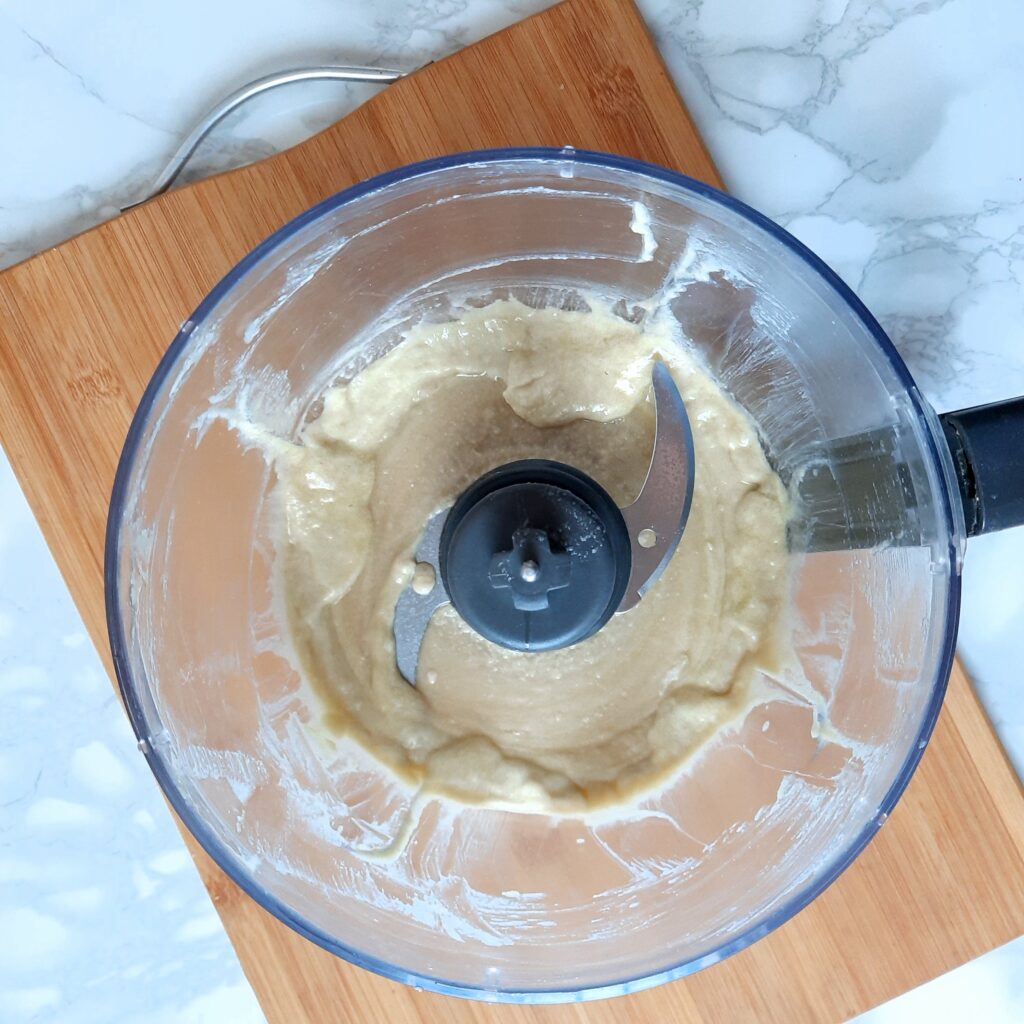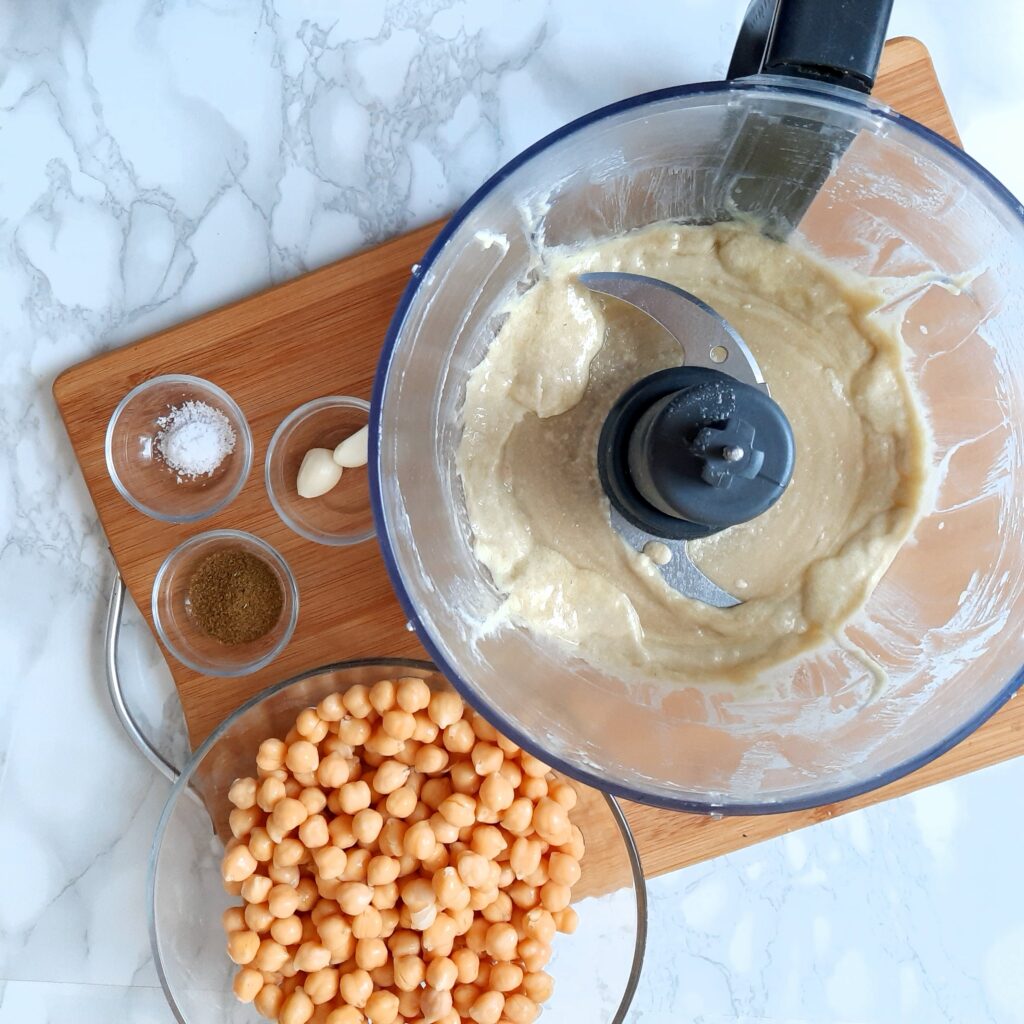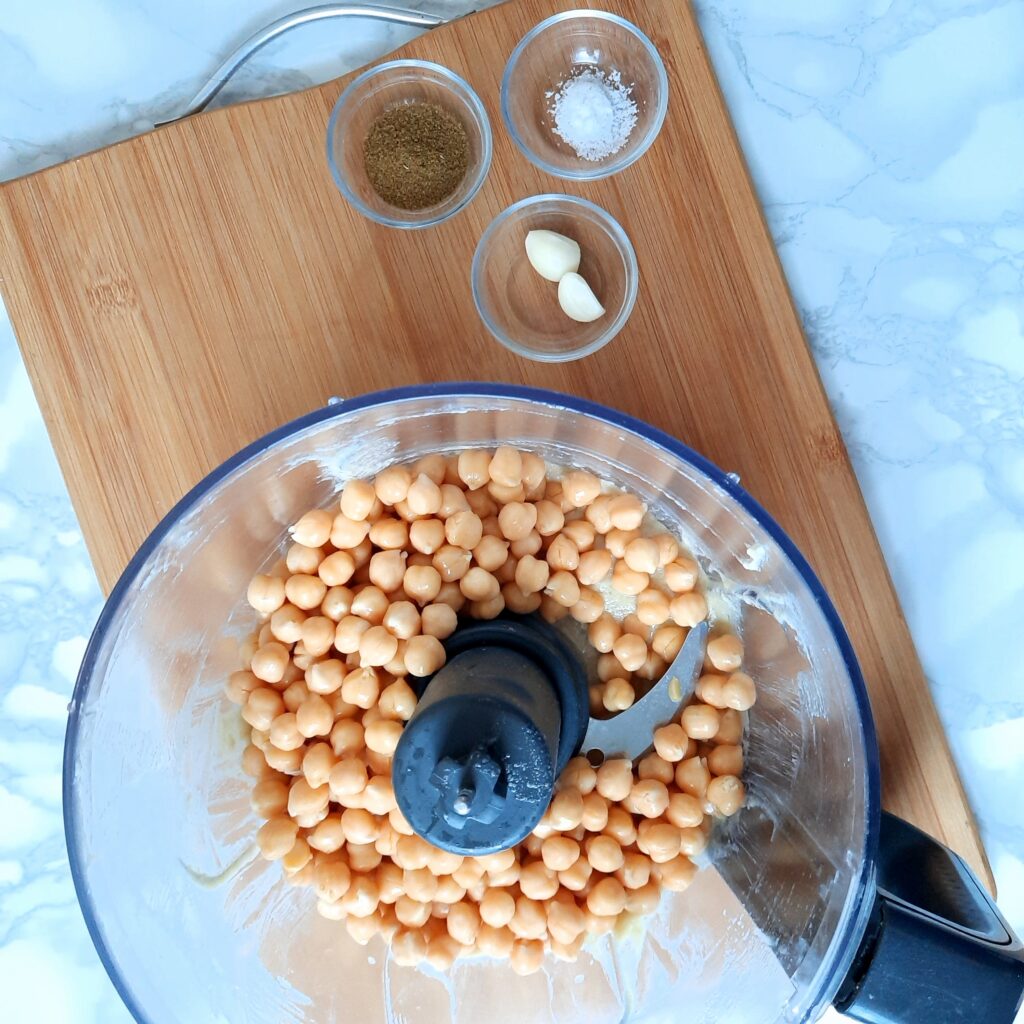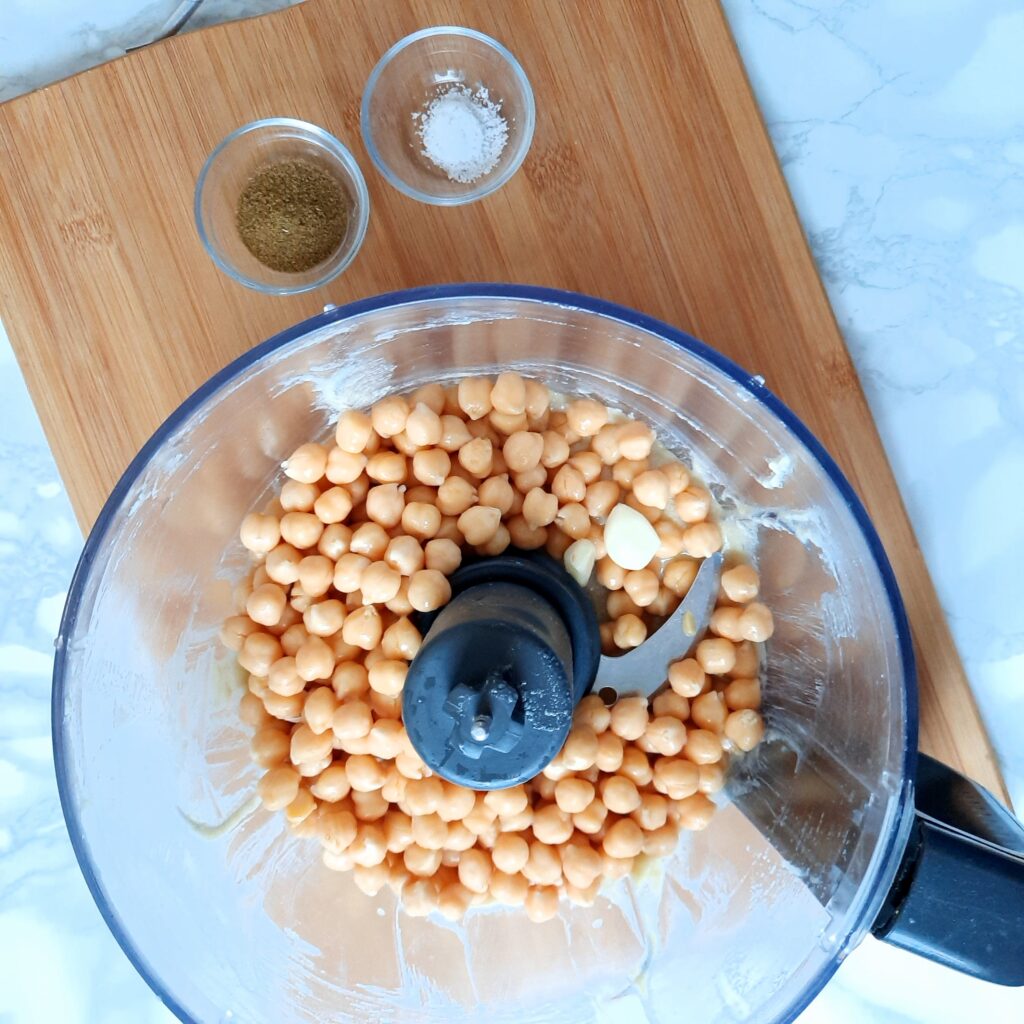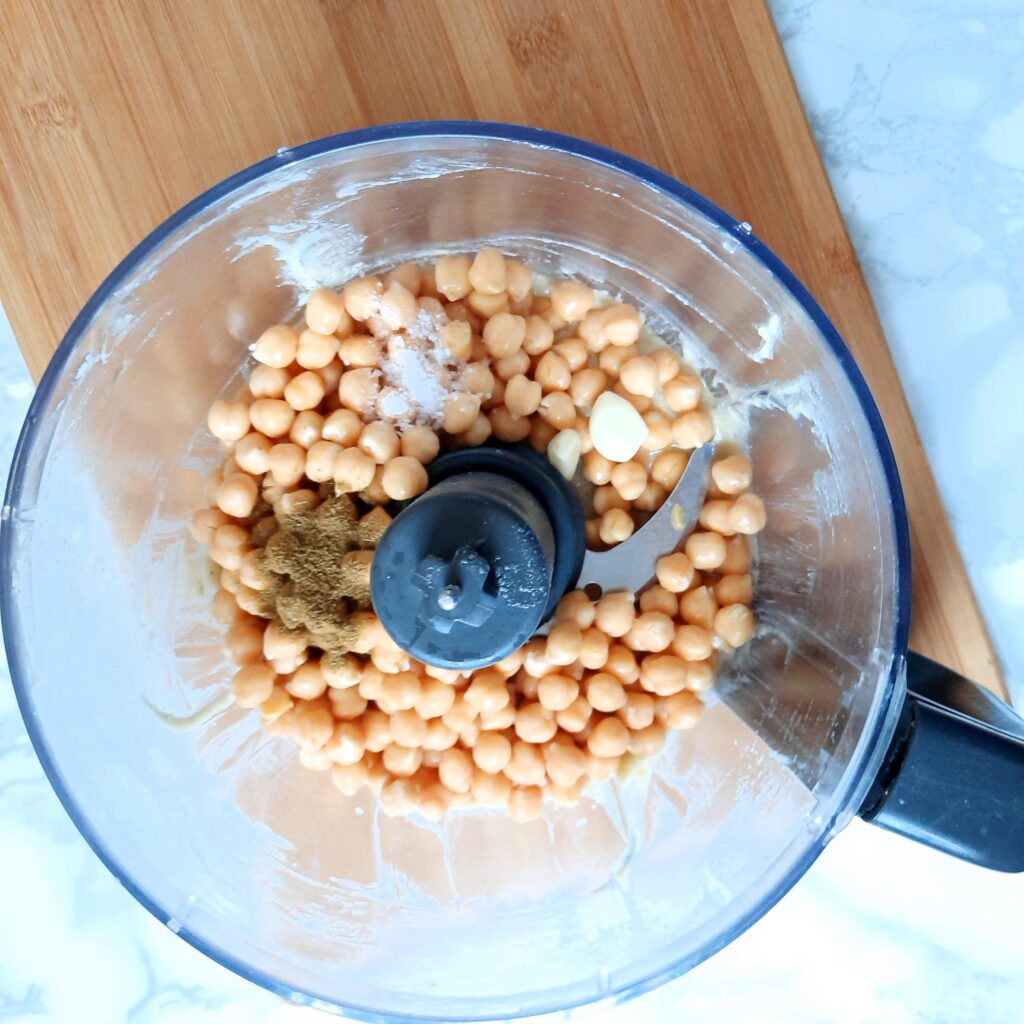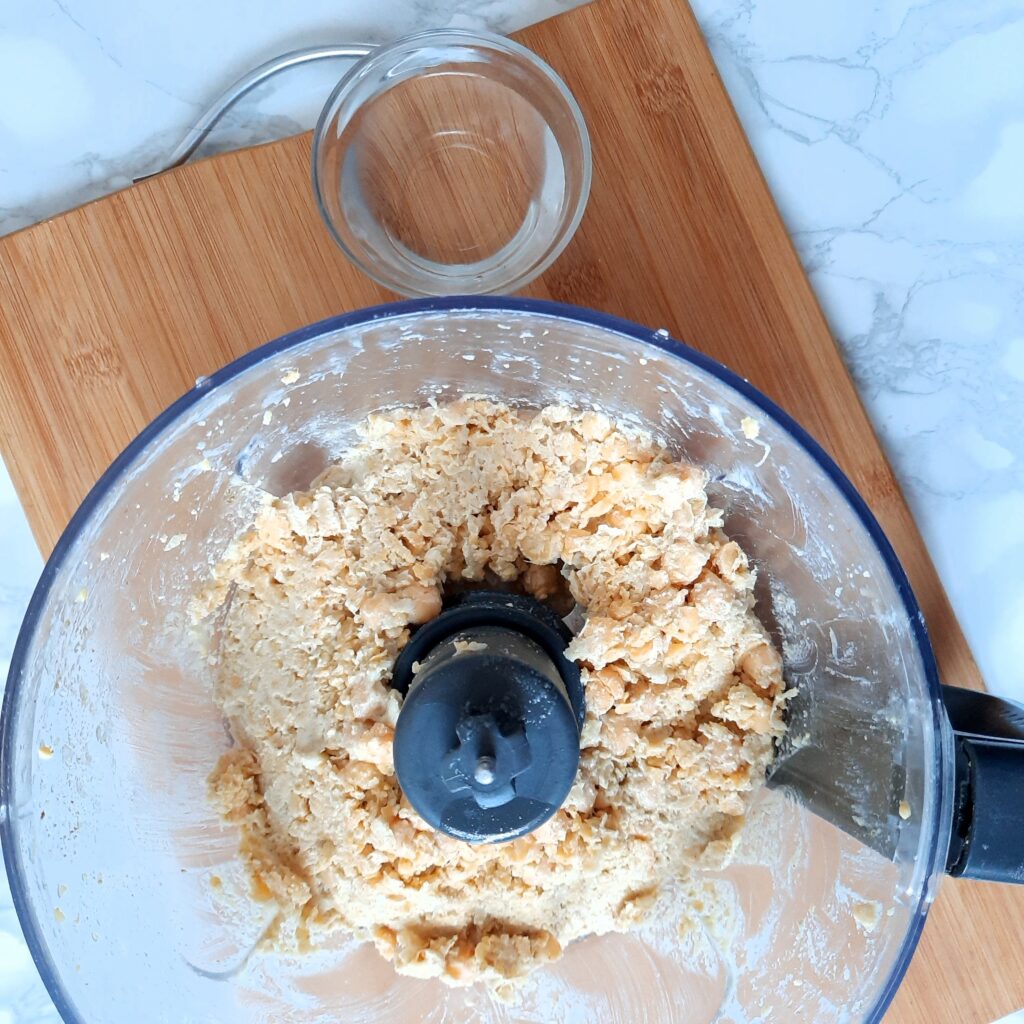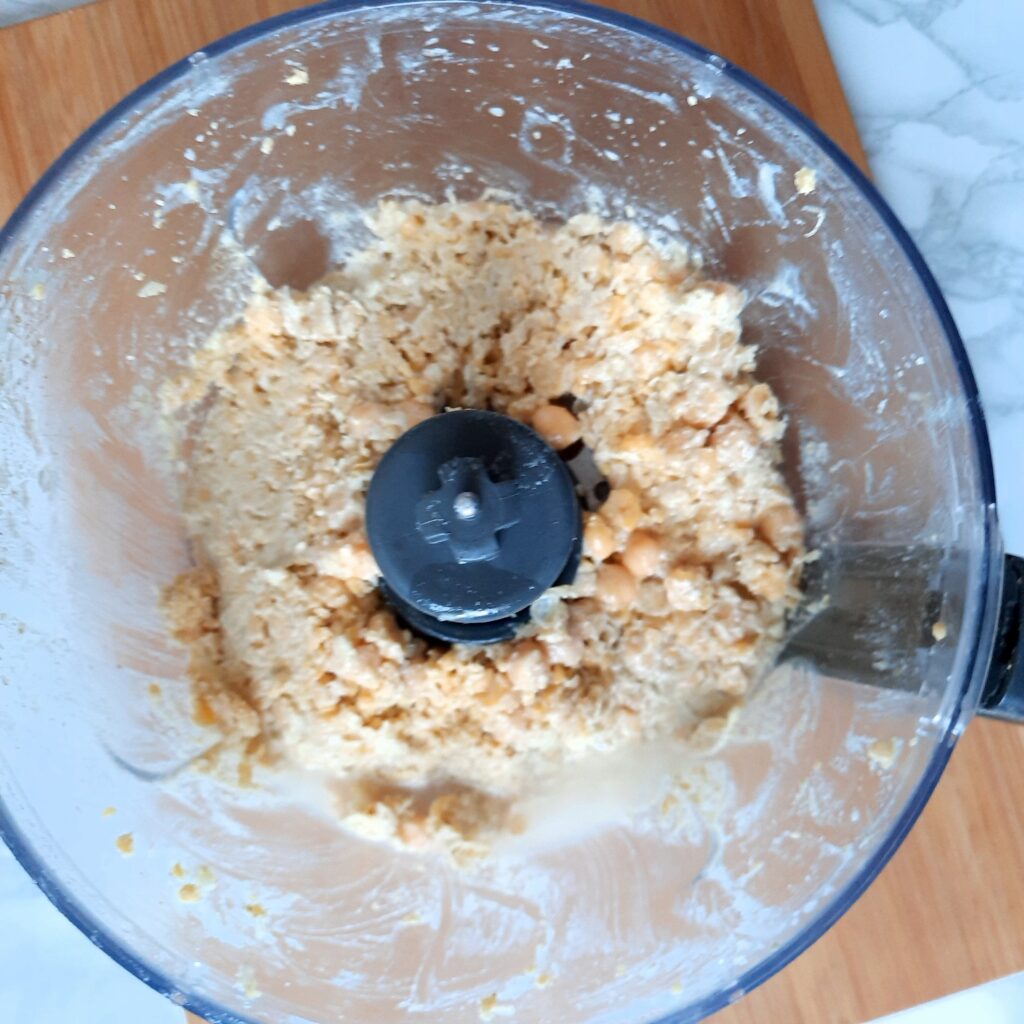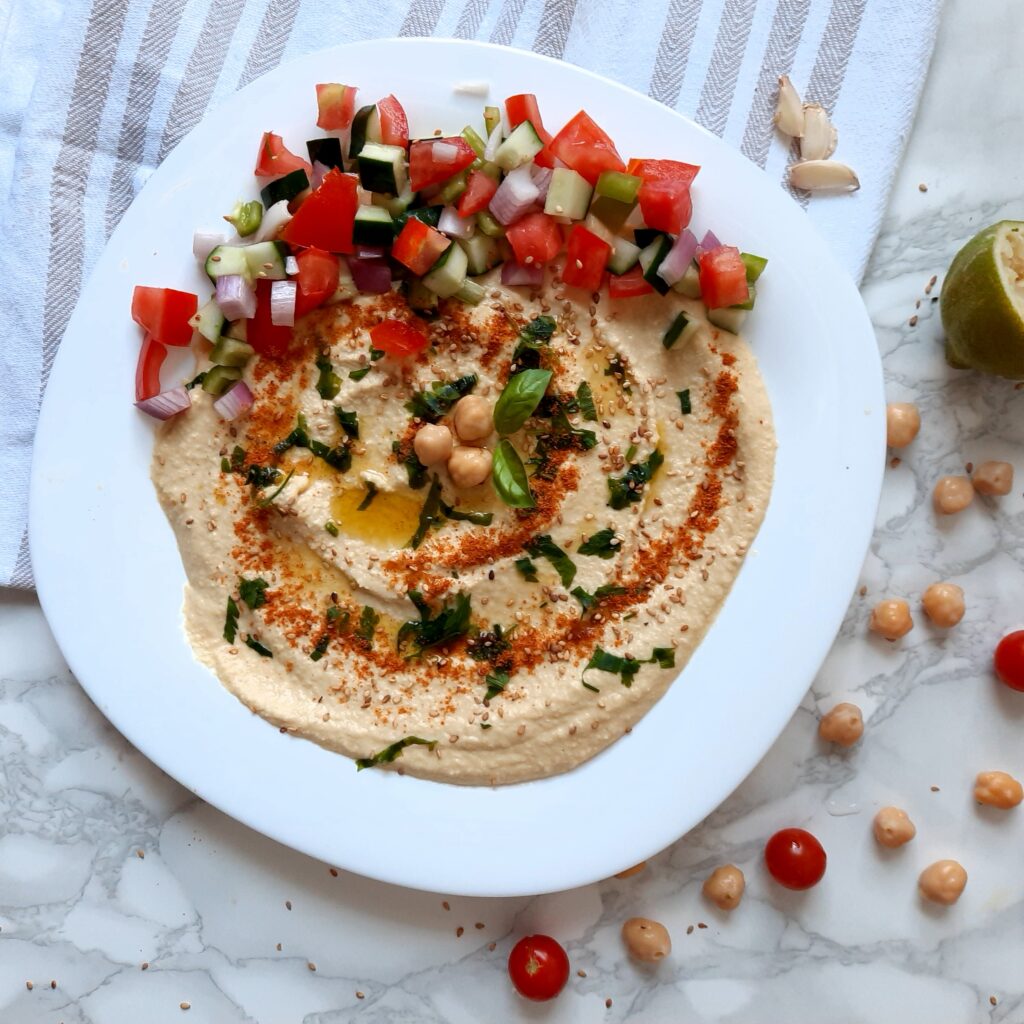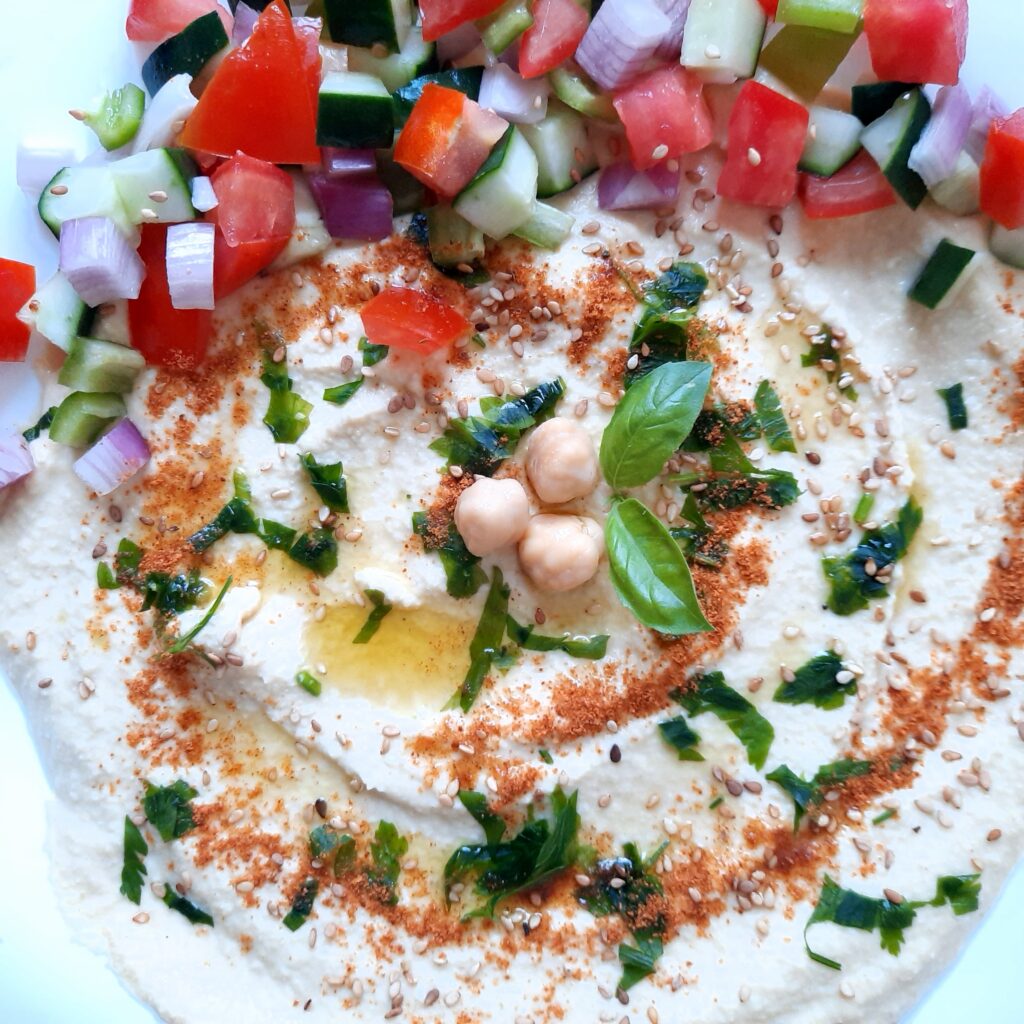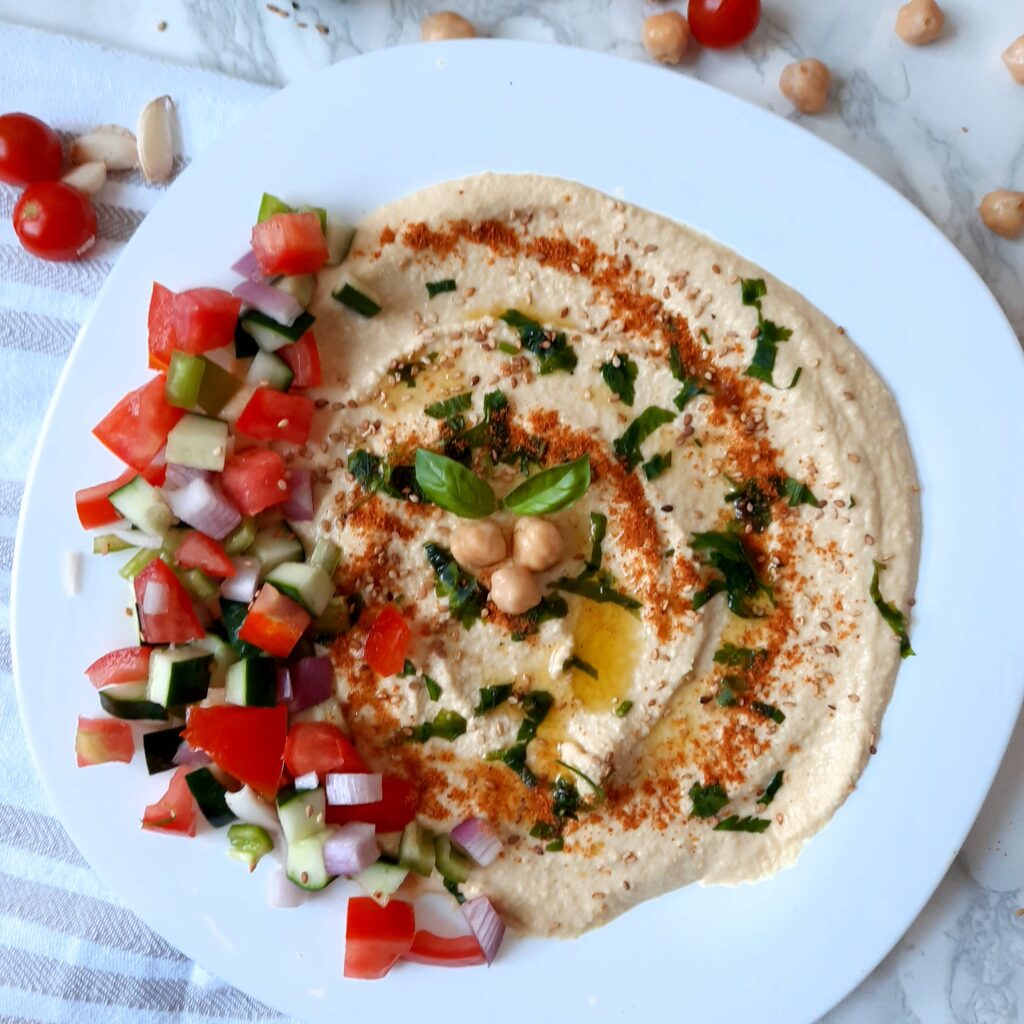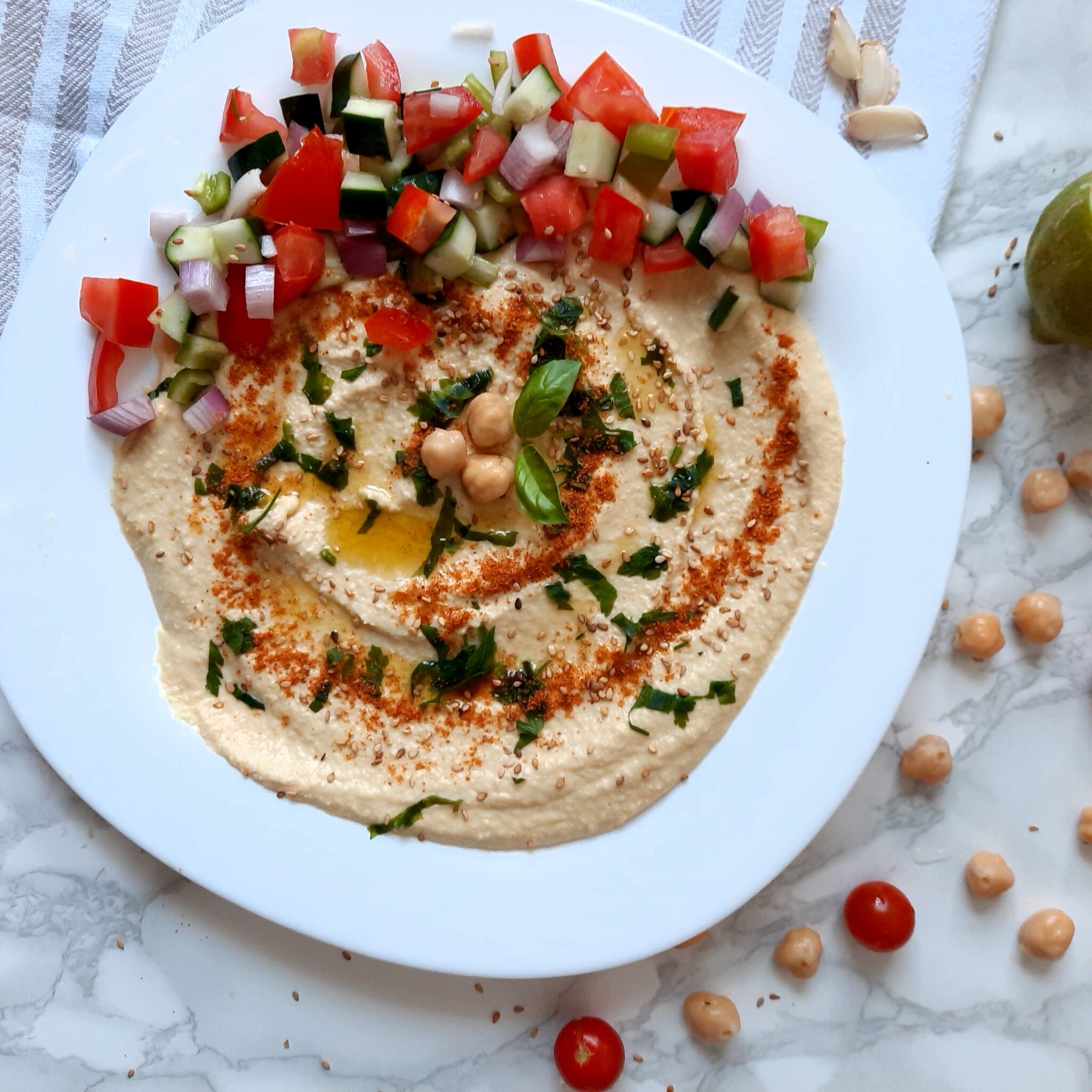Hummus is a delightful Middle Eastern dip that has gained immense popularity worldwide. Made from simple ingredients like chickpeas, tahini, lemon juice, garlic, and olive oil, hummus offers a creamy and flavorful experience that pairs perfectly with pita bread, fresh veggies, or as a spread in sandwiches. In this homemade hummus recipe, we’ll guide you through the steps to create a smooth and luscious dip that will surely be the star of your next gathering or snack time.
Origin and history
The word hummus is Arabic Arabic: حُمُّص, romanized: ḥummuṣ (also spelled hommus or houmous) which means ‘chickpeas’. But the official title of this dish is “hummus bi tahina” (chickpeas with milled sesame seeds), since The earliest known written recipes for a dish resembling hummus bi tahina are recorded in cookbooks written in Cairo (Egypt) in the 13th century.
Hummus is a popular Middle Eastern dish with a rich history that dates back thousands of years. Its exact origin is not entirely clear, as different cultures in the region have their own versions of this delicious spread. Some historians believe that hummus may have originated in ancient Egypt, where a similar dish made from mashed chickpeas and other ingredients was consumed. Others attribute its origins to the Levantine region, which includes modern-day Lebanon, Syria, Jordan, and Palestine. Regardless of its precise origins, hummus has become a beloved staple in Middle Eastern cuisine and has gained widespread popularity around the world.
Tips and notes
To create a successful hummus, here are some essential tips:
- Use cooked chickpeas for the best texture. Canned chickpeas are a convenient option, but dried chickpeas are better. If using dried chickpeas, soak them overnight with a spoon of baking soda and cook until they are tender, this helps to break down the chickpea skin and ensure a smooth and creamy consistency.
- Tahini is a key ingredient in hummus, providing a creamy texture and nutty taste. Ensure it’s well-blended before adding it to the mixture and use a generous amount to enhance the flavor.
- Freshly squeezed lemon juice adds a bright and tangy taste to the hummus. Avoid using bottled lemon juice for the best results.
- Garlic is another important flavor component in hummus. Use fresh garlic cloves for a robust and aromatic taste, but you can adjust the garlic quantity to your preference. If you prefer a milder flavor, use less garlic.
- Don’t forget to season the hummus with salt and ground cumin to enhance its overall taste.
- For a smooth and creamy texture, blend the hummus ingredients thoroughly in a food processor or blender. You may need to stop and scrape down the sides a few times.
- Chickpeas and tahini can become very thick when blending. Have some cold water next to the blender and add bit by bit to achieve a nice smooth and creamy consistency.
- Depending on personal preference, you can adjust the consistency by adding more olive oil or water. For a creamier texture, add more olive oil, and for a lighter consistency, add some water.
- After blending, let the hummus rest in the refrigerator for at least 30 minutes to allow the flavors to meld together.
- There are hundreds of flavor variations you can make. This recipe can work as your foundation recipe, then you can add whatever combination takes your fancy, depending on what seasonal ingredients are available. Some ideas include Cannellini bean, Olive tapenade, Sundried tomato, Globe artichokes, Avocado, Black sesame, Basil pesto, Sweet potato, Red pepper/capsicum, Beetroot, Pumpkin, …
Serving
Hummus is a versatile and delicious dish that can be served in various ways:
- Dip: Hummus is commonly served as a dip with pita bread, pita chips, or vegetable sticks such as carrots, cucumbers, celery, and bell peppers. It’s a perfect appetizer or snack for gatherings and parties.
- Spread: Use hummus as a spread on sandwiches, wraps, or as a base for a vegetable platter. It adds a creamy and flavorful element to any dish.
- Side dish: Serve hummus as a side dish alongside grilled meats, kebabs, or falafel. It complements savory dishes and adds a touch of freshness.
- Salad dressing: Thin down hummus with some water or lemon juice to create a creamy salad dressing. Drizzle it over salads for a delightful twist.
- Garnish: Use a dollop of hummus as a garnish for soups, stews, or grain bowls. It adds creaminess and enhances the overall taste of the dish.
- Burger or sandwich spread: Hummus can be a delicious alternative to traditional condiments like mayo or ketchup on burgers and sandwiches.
- Wrap filling: Spread hummus on tortillas or flatbreads and use it as a flavorful filling for wraps or roll-ups.
The possibilities are endless, and hummus can be enjoyed in countless ways to suit your taste and creativity. Its creamy texture and rich flavor make it a favorite addition to many dishes.
Variations
There are several delicious variations of hummus that cater to different tastes and dietary preferences. Some popular variants include:
- Roasted Red Pepper Hummus: This version includes roasted red bell peppers, which add a smoky and slightly sweet flavor to the traditional hummus.
- Spinach and Artichoke Hummus: Blending in cooked spinach and artichoke hearts gives the hummus a unique and savory twist.
- Beetroot Hummus: Adding roasted or cooked beetroots not only gives the hummus a vibrant pink color but also imparts a slightly earthy and sweet taste.
- Avocado Hummus: Merging the creaminess of avocado with hummus creates a delightful combination that avocado lovers will adore.
- Lemon and Dill Hummus: Incorporating fresh lemon juice and dill provides a refreshing and herby flavor to the hummus.
- Sun-Dried Tomato Hummus: Combining sun-dried tomatoes with hummus delivers a rich and tangy flavor profile.
- Cilantro Lime Hummus: The addition of cilantro and lime juice creates a zesty and aromatic hummus variant.
- Spicy Hummus: For those who enjoy a bit of heat, adding chili peppers or hot sauce gives the hummus a fiery kick.
- Black Bean Hummus: Blending black beans with chickpeas results in a hummus with a darker color and a slightly different taste.
- Edamame Hummus: Using edamame instead of chickpeas produces a unique and protein-rich hummus.
Variants
- Baba Ghanoush;
- H’miss;
- Tahini;
- Guacamole;
- Tatziki;
- Muhammara;
- Pesto;
- Chimichurri;
- Labneh;
- Satsivi;
- …

Smooth and Creamy Hummus: A Delicious Middle Eastern Dip
Ingredients
- 250 g cooked chickpeas
- 60 ml
Tahini - 60 ml lemon juice
- 45 ml cold water
- 30 ml olive oil
- 2 garlic cloves
- 1 tsp cumin
- ½ tsp salt
Instructions
- In a food processor or blender, combine the tahini, lemon juice and olive oil.
- Blend the mixture until smooth and creamy.
- To the food processor, add the cooked chickpeas, garlic, water, ground cumin, and salt and blend at high speed.
- Add a splash of the cold water and blend (mixing throughout and scraping down the sides) until super smooth. Add a splash of more water if it's a little thick.
- Next, add the hummus to a mixing bowl and check the seasoning. At this stage, you may need to add more salt, cumin, olive oil or lemon.
- Transfer the hummus to a serving bowl, and if desired, drizzle with olive oil and sprinkle with paprika, chopped parsley, or toasted sesame seeds for a beautiful presentation.
